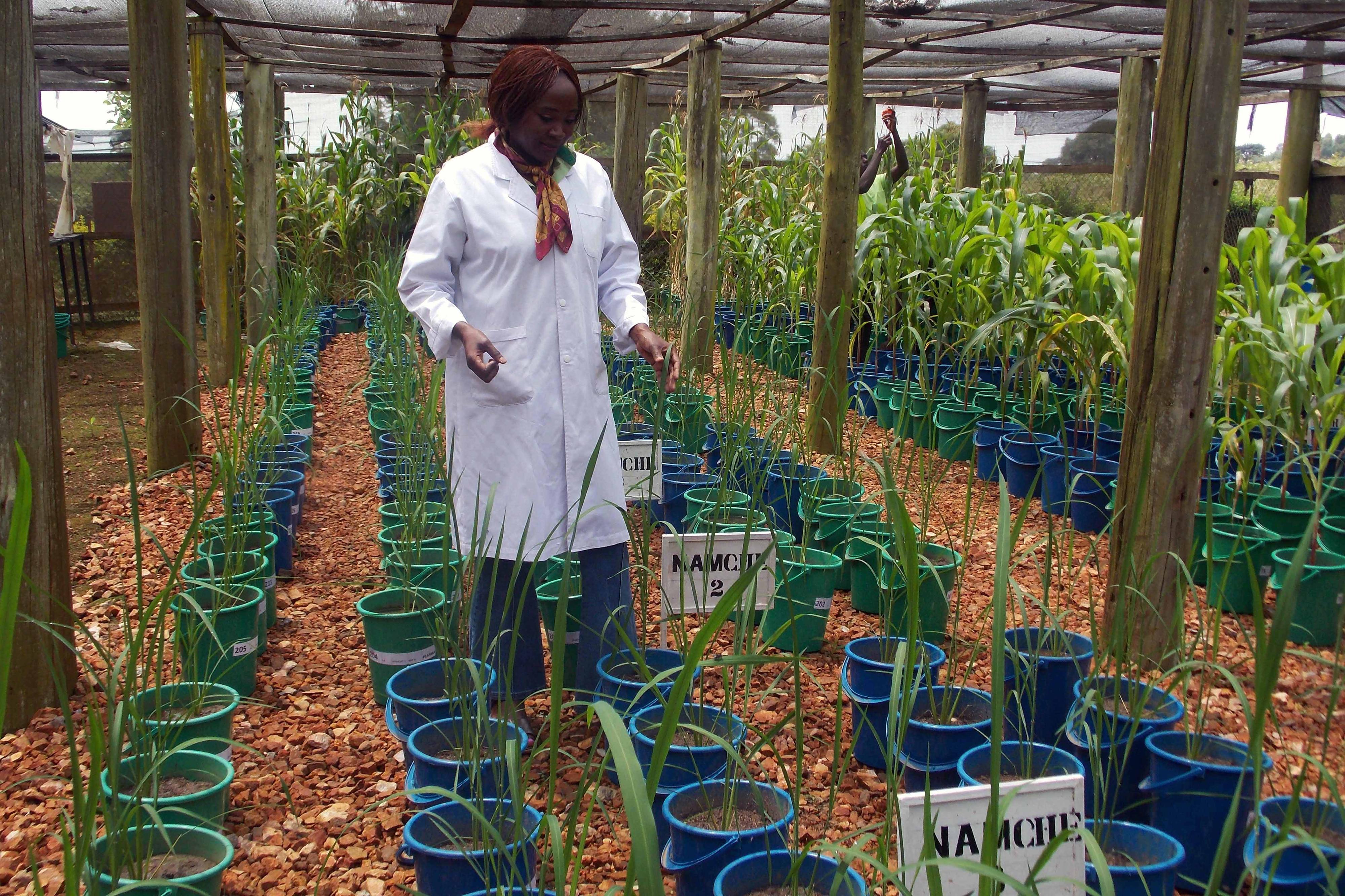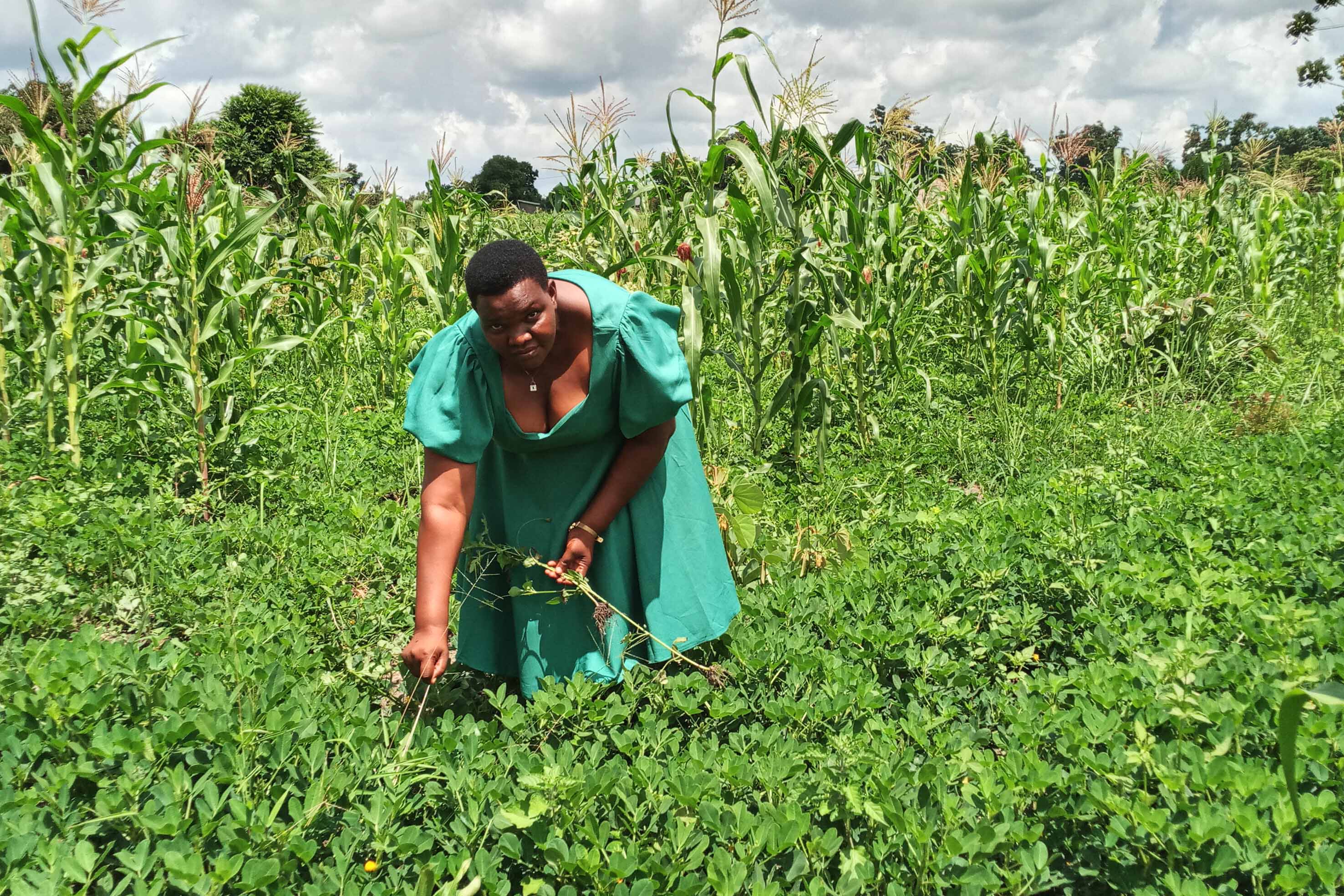Prime
Different crop growing areas

Science and innovation are key to modern farming. Photos/Michael J Ssali
What you need to know:
- Climate change is not a big challenge to only crop farmers; it is also a big threat to livestock keepers. Due to the rising temperatures tsetse fly, ticks, and other parasites have gained entrance to areas that were considered fairly cold and safe for keeping exotic cattle and goats.
Many people often wonder why some cash crops deemed to be essential for poverty reduction are grown in particular areas of the country yet the fight against poverty is supposed to be all over the country.
“If coffee is such a valuable crop in terms of cash generation, why is its production limited to only some regions of the country?” asked an agronomist. He went ahead to insinuate that since most of the traditional cash crops such as coffee, cotton, and cocoa were introduced here by the colonial government there was some unfairness in the allocation of the crops’ growing areas with the intention to keep some ethnic communities economically behind others.
Background
“That could not have been the case,” says Charles Katabalwa the executive director of SAWA Agricultural Development. “There was no malice practiced. Moreover the colonialists are no longer here and we continue growing the crops mainly in the same zones as before. When they came here they made a study of the soil in the various regions and the rainfall patterns.
These were matched with the crops’ growth requirements. The allocation was based on altitude, soil suitability, and rainfall availability of all the regions. Some crops can only be grown in high altitude areas while others do very well in low altitude areas. Rainfall availability is a very limiting consideration unless there is a provision for irrigation”.

Modern farming will require science and innovation to succeed.
Types of soils
Katabalwa gave the example of apples which normally grow very well in Kabale District. The climatic conditions in Kabale District are quite favourable to apple production but this is not the case for many other regions in Uganda.
“Nowadays the government is putting soil testing equipment at every sub-county for the farmers to ascertain if the soil nutrient content is suitable for the crops they want to plant,” Katabalwa said.
“In Soroti, oranges do very well but they do not generally grow well in districts such as Kyotera, Masaka, or Rakai.” He pointed out further that if a region has the required conditions for growing the crop the farmers there may begin to grow the crop.

Due to climate change some crops like banana are dying.
Climatic conditions
In their book titled: East African Agriculture, Ngugi D N, Karau P K and Nguyo W, say the following about pineapple: “A well-distributed annual rainfall of at least 1000mm is required by pineapple for optimum growth and yield. Irrigation may be necessary under certain conditions to make sure there is a regular supply of moisture. In East Africa, the crop is grown from sea level up to about 2,000m. Pineapple for canning purposes must, however, be grown within the altitudinal limits of about 1,350-1,750m.
The fruits of pineapple grown either above or below the limits are either too acidic or too sugary, for canning. Free draining sandy-loams of low lime content and with a pH of 5.0-6.5 are the best soils for pineapple.”
The same book talks about necessary conditions for commercial growing of tea. “The crop is grown in areas between 1200-2,200m. The lower limit is set by scarcity of rainfall, while the upper limit is set by incidence of frost. Warmer conditions lead to higher yields of tea. Within the limits, the quality of tea improves with rise in altitude. Tea requires a well-distributed annual rainfall of 1500-1750mm.
For good growth and yield, the soil should be deep, well –drained and should have a pH of 4.0-6.0. Tea is mainly grown on slopes of mountains and highlands in East Africa.

Pineapples do well in some parts of the country and in other parts yields are poor.
Geographical conditions and soil nutrient
To grow any crop as a business it is important to consider the required geographical conditions and soil nutrient content for the crop’s successful growth. It would highly be risky for example to grow a crop such as Robusta coffee in an area that takes six or more months without getting any rain.
Mainly due to geographical reasons different parts of the country cannot grow the same crops. If some regions grow coffee to fight poverty, other regions are best suited for cotton or groundnuts. Some regions can only fight poverty by growing soybean or maize or any other crops.
Segmentation
It has to be borne in mind that before independence, many of the crops that were grown in Uganda were meant to be shipped to Europe.
The colonial administrators, after studying the rainfall patterns, the soil fertility in the different parts of the country, and observing other geographical conditions, allocated particular crops to the regions found to be most suitable for producing them.
Tobacco was found to be most suitable for Arua and some neighbouring districts just as was Arabica coffee. Some districts such as Gulu, Lira and a few others in that region were allocated simsim, soybean and sunflower. Kasese region and Fort Portal were considered most suitable for Arabica coffee.
Fort Portal and its neighbourhood was also found to be good for tea production. Busoga Region and Mukono and Buikweo had to grow sugar cane as raw material for the sugar factories.
Mbale was allocated Arabica coffee and other districts in Teso were allocated cotton. The central region grew Robusta coffee and cotton but some parts of it---- like Rakai District are so fertile that they appeared suitable for nearly all the other crops grown wherever else, including tobacco, onions, Irish potato and many other crops. Western region too grew Robusta coffee.
Irrigation
However these days absence of rainfall and soil fertility is no longer a major limiting factor because some farmers can afford to carry out irrigation and to use fertilisers to make their soil productive.
This is one of the reasons the government is putting soil testing kits at every sub-county for the farmers to identify the missing soil nutrients and to purchase the right fertilisers.
Some effort is now being made to introduce Robusta coffee growing in districts such as Lira, Oyam, and Gulu, an idea that may turn out to be successful especially where farmers can practice irrigation.
Crop diseases
All the same agriculture as we have always known it is faced with the big challenge of Climate Change. Addressing a biotechnology stakeholders seminar last month in Kampala, Peter Wamboga of Science Foundation for Livelihoods and Development told participants, “Climate change is not just about floods, heat and long droughts, it has also come with dangerous crop diseases that are proving hard to overcome by ordinary means.”
When various crops were allocated to particular regions due to rainfall distribution and other such factors not so much was known at that time about the possibility of climate change and its effects.
The farmers in areas that were considered to be suitable for crops such as Robusta coffee, banana, Irish potato, sweet potato, cotton, and maize due to sufficient rainfall distribution are now struggling with pests and diseases that are set to wipe out the crops. Long droughts and unpredictable extreme weather patterns are making crop production a nightmare.
Climate change is not a big challenge to only crop farmers; it is also a big threat to livestock keepers.
Due to the rising temperatures the tsetse fly, ticks, and other parasites have gained entrance to areas that were considered fairly cold and safe for keeping exotic cattle and goats. The female anopheles mosquito notorious for spreading malaria has also spread to geographical zones where it was never known to exist. Prolonged droughts make grass and water scarce leading to decreased hardships for livestock keepers.
Farming will have to involve plenty of science and innovation to produce the amount of food needed to feed the growing population and to meet the market demands for raw materials for our industrial development.
Biotechnology is looked at as one of the possible solutions. Natural environment protection and massive tree planting is also considered another possible solution.
Increased irrigation is yet another possible solution but if the ongoing mindless destruction of wetlands continues water sources may dry up and make irrigation impossible.
Key fact
It has to be borne in mind that before independence, many of the crops that were grown in Uganda were meant to be shipped to Europe.
The colonial administrators, after studying the rainfall patterns, the soil fertility in the different parts of the country, and observing other geographical conditions, allocated particular crops to the regions found to be most suitable for producing them.




